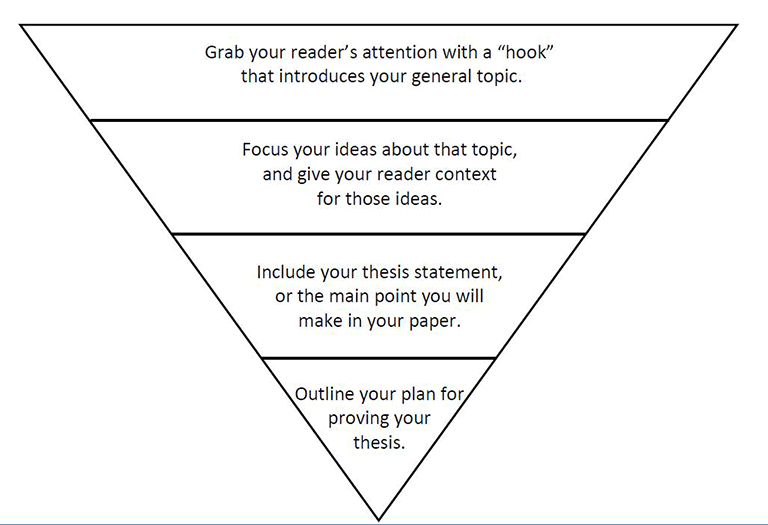Writing Introductions
The introduction to your paper is a very important section, because it sets the expectations of your readers. While there is no one formula for a strong introduction, it helps to keep the following elements in mind when creating one.
Introductions Should:
Attract the reader’s attention.
This is your first impression on your reader, so be sure to include a “hook” that will capture their interest right away.
Introduce your topic.
Let your readers know what you’ll be writing about with a brief overview of the topic or topics you’ll be covering.
Include a strong thesis statement.
This is the most important element of your introduction. Your thesis will clarify your position or ideas about the topic, and prepare your reader for what to expect in the body of your essay.
Provide an outline of how you will prove your thesis statement.
Give your readers a brief outline or “roadmap” of how you plan to approach your topic and prove your thesis.
Introductions Should NOT:
Be too long.
Most papers you will write in college can be introduced in a single paragraph.
Include a lot of background information.
Save this for the body of your essay, and only include facts that are necessary for the reader to understand your thesis.
Include too many generalizations.
It’s okay to begin with a statement that gives an overview of your topic, but broad generalizations and common-knowledge statements should be avoided.
Introduction Formats:
Most strong introductions present your broadest or most general points first, and conclude with your most specific points – usually your thesis statement, or an overview of how you plan to prove that thesis. The model below can help you to structure an introduction.
